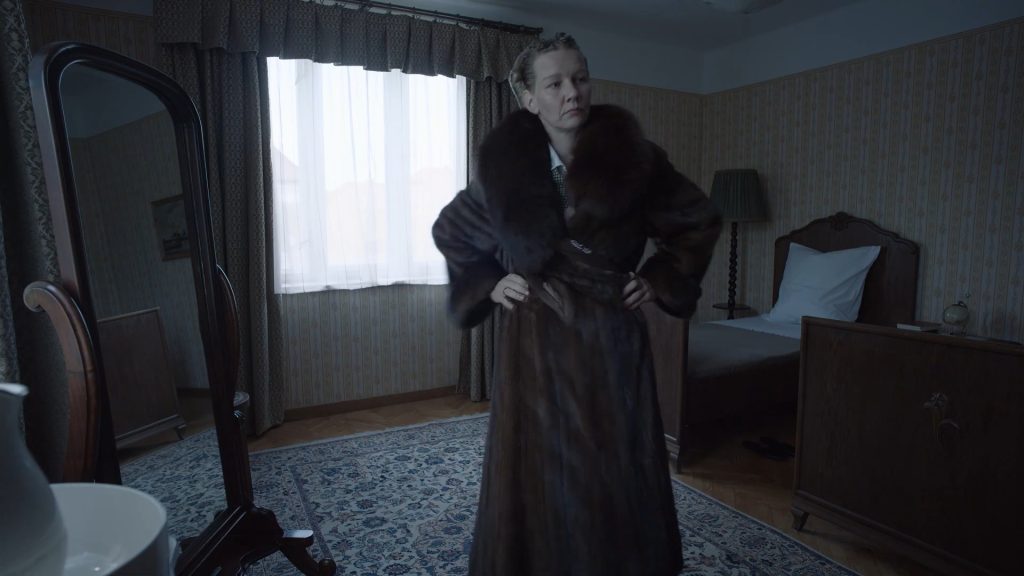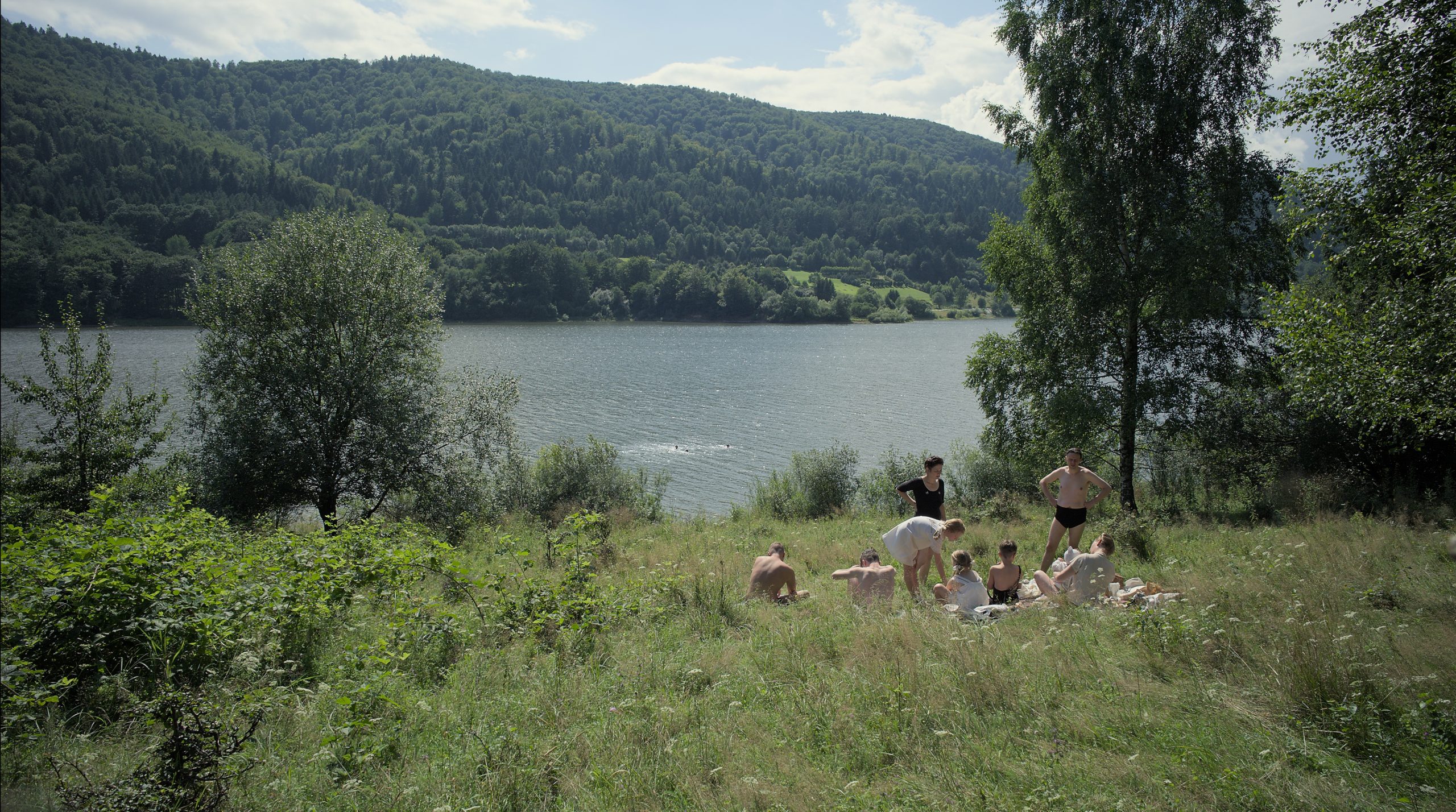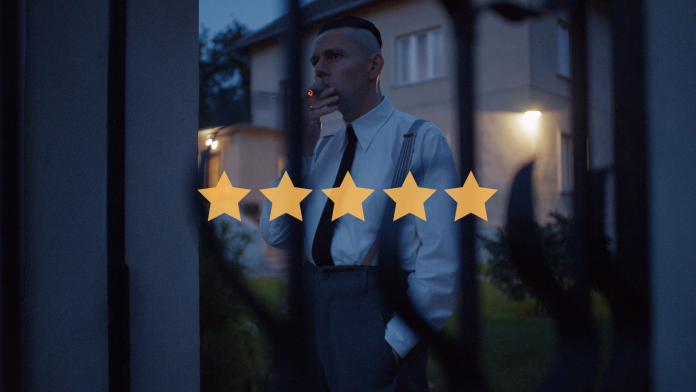The 2023 Cannes Film Festival Grand Prix Winning Holocaust drama casts its focus on the perpetrators.
★★★★★
“To write poetry after Auschwitz is barbaric.” This oft-cited dictum of German philosopher Theodor Adorno delineated humanity’s profound desolation in the years following the Second World War. Art, the very faculty which allows us to subsist in times of despair, called to cessation—how can we ever create again? A distance, beyond the temporal, has fruited in the eighty years since the Holocaust; one that sees us unconditionally and completely dissociate ourselves from its hideous perpetrators. Jonathan Glazer’s latest film contracts that distance to remind us, as human beings, of our capacity for evil.
Loosely based on Martin Amis’ novel of the same name, The Zone of Interest follows Auschwitz Commandant Rudolf Höss (Christian Friedel) and his wife Hedwig (Sandra Hüller) as they build their ideal life in a house next to the camp. They’re pictured in prosaic mundanity; we watch them picnic with their children by the riverside, splash in the pool with friends and break bread as a family. Hedwig’s mother visits and remarks at the colourful assembly of flowers in the garden, her granddaughters skipping in the grass nearby. Behind the azalea bushes, on the perimeter of this verdant family space, the tall camp walls stand. Beyond them, smoke-stacks billow as industrial murder flickers orange light into the evening skies.
Glazer’s first film since the extraordinary Under The Skin (2013) maintains this harrowing contrast throughout. Rudolf’s work at Auschwitz earns him a transfer to Oranienburg, leaving behind the camp’s violence in favour of the paper-pushing remove of bureaucracy. He sits in boardrooms as the efficiencies of crematoria are discussed with cold indifference between Nazi officials. Hedwig steadfastly refuses to abandon the idyllic home they have built and her flowers in the garden, flowers we later learn are nourished with ash from the camp. Conflicts of desires and aspirations endemic to human relations are manifest here, just as they would be in a family drama—but their cruel irony unearths something wholly and gutturally disturbing.

Later, playing with his children in the river, Rudolf notices bones. He rushes the children out and back to the house. Glazer underscores the horrifying detachment the family have from the atrocities being committed just outside their walls. Hedwig washes the children with angered intent; seeking to remove the contamination between Rudolf’s work and his family, and to conceal her own reality from herself. The Zone of Interest handles these moments with an earnest candidness, a measure of its conviction.
The film does not venture over the walls surrounding the garden, the horrors of the camp remain shrouded in the periphery. Instead, sound is used to communicate the perpetual atrocities being committed a stone’s throw from the Höss dinner table. Screaming, shouting, cries and gunshots ring into the garden and the surrounding fields, through the windows of the house. As an audience, the ubiquitous persistence of such sounds pervades each frame, they shake us, repulse us. For the unperturbed Höss family however, these horrors are but ambient commonplace, car horns in a city. Working alongside Johnnie Burn, with whom he collaborated to create the enigmatic soundscape of Under the Skin, Glazer intently understands the interpretive capacities of sound. In interviews he notes that The Zone of Interest was always two films, one in the realm of the visual—the story of the Hösses— and the other in our minds as we construct images from the sounds behind the wall.

The only time we are shown inside the walls comes within the film’s concluding moments, a cut to present-day Auschwitz where museum cleaners wipe the glass windows enclosing piles of shoes and personal belongings. In contrast to the careful sterility of the Höss house, the act of cleaning is now used to elucidate rather than conceal, to underscore the importance of remembering; as powerful a statement as cinema can make.
The Zone of Interest’s narrative beats are sparse, opting instead for an almost forensic surveillance of quotidian family life. With a majority static multi-camera set-up and scenes recorded simultaneously around the house and garden, Glazer sustains a spatial and temporal actuality akin to the schematic layouts of current-day reality television programmes. It is this shrewd axiom, the alignment of the past with the present to remove our distance from the events of the Holocaust, that works as the film’s compelling through-line.

Attempting to foreground the human similarities between such putrid characters and that of our own, without personalising or glorifying them, is a conceptual gambit that the film performs with reverential aplomb. An astutely calibrated compositional language keeps the Höss family at arms length from the audience. Seldom do we deviate from the established vocabulary of long and medium shots; close-ups are few and far between. Further, the decision to shoot remotely with crew off-site affords Hüller and Friedel the space to realise their characters. It’s a complete removal of authorship from an auteur renowned for his rich and versatile images, and a testament to his solemn and unabated devotion to depicting the inconceivable.
Mica Levi, another long-time Glazer affiliate, bookends the film with two stark pieces of music. The opening overture, a church-like hum ascending into throbs of heavy synths before dissipating at the arrival of birdsong, is set against a blank screen—as though the film is beckoning you to listen before you see. With such focus on the noises of the camp, Levi’s score finds itself reserved for moments where sound and image alone cannot quite locate Glazer’s lyrical intent. The most pertinent realisation of this is within a montage of the vibrant flowers in the Höss family garden. As the film cuts between the wide variety of flora, the camp’s sounds meld together and gurgle beneath the frame. Two plucks of a string and the last image of a flower fades into red, its searing hue consumes the screen entirely—an earth-shattering sequence, the type that imprints upon the soul.
The Verdict
Glazer’s fourth feature transcends the boundary between past and present to remind us of our capacity for evil. If Adorno was willing the admonishment of artistic responses to Auschwitz when he equated poetry with barbarism, then The Zone of Interest serves to prove otherwise. To not write poetry—to not reflect on the Holocaust—is itself barbaric. Glazer wants us to engage, remember and consider that we are never too distant from 1945. The Zone of Interest is a masterfully singular work, an essential piece of art for our times and for every time after.
The Zone of Interest is available in UK cinemas from the 2nd of February.
Words by Samuel Parkes
Support the Indiependent
We’re trying to raise £200 a month to help cover our operational costs. This includes our ‘Writer of the month’ awards, where we recognise the amazing work produced by our contributor team. If you’ve enjoyed reading our site, we’d really appreciate it if you could donate to The Indiependent. Whether you can give £1 or £10, you’d be making a huge difference to our small team.

Very well written. A real insight as to what happened during the war.
Great review.